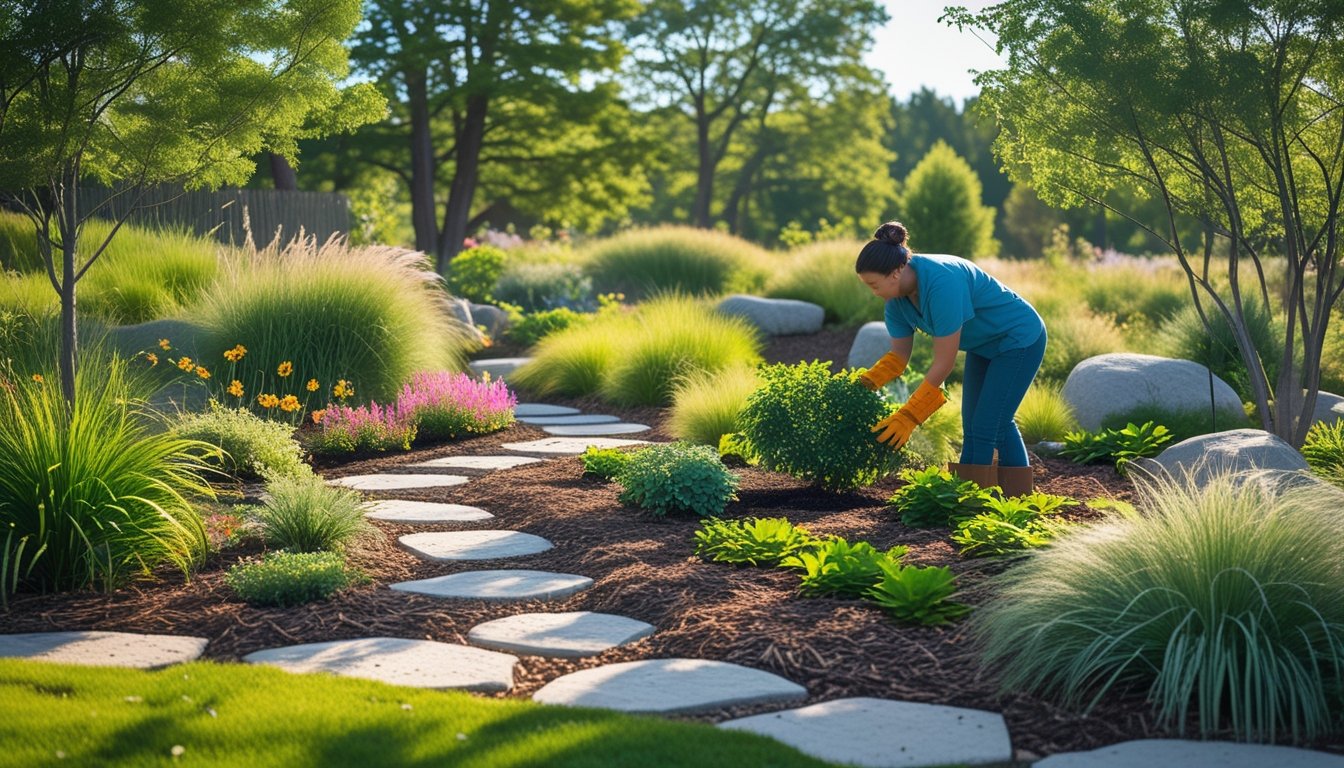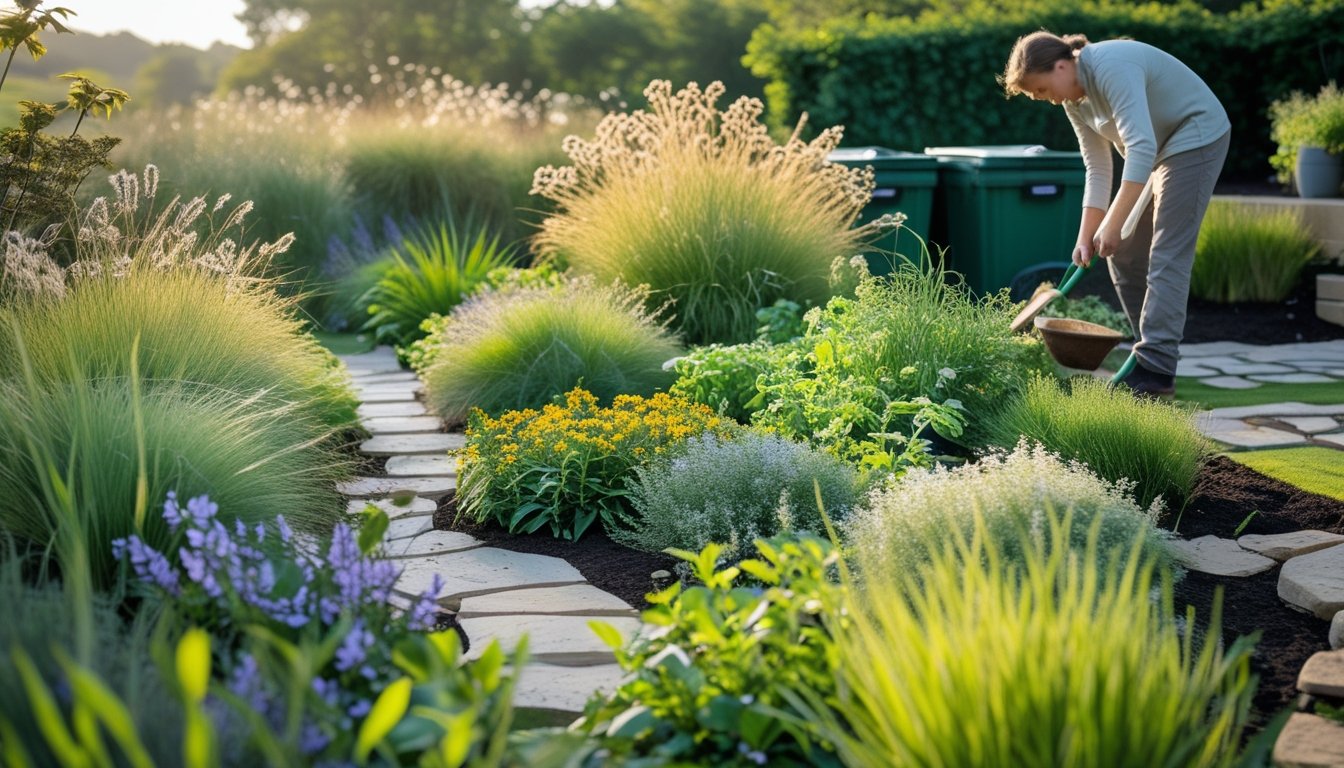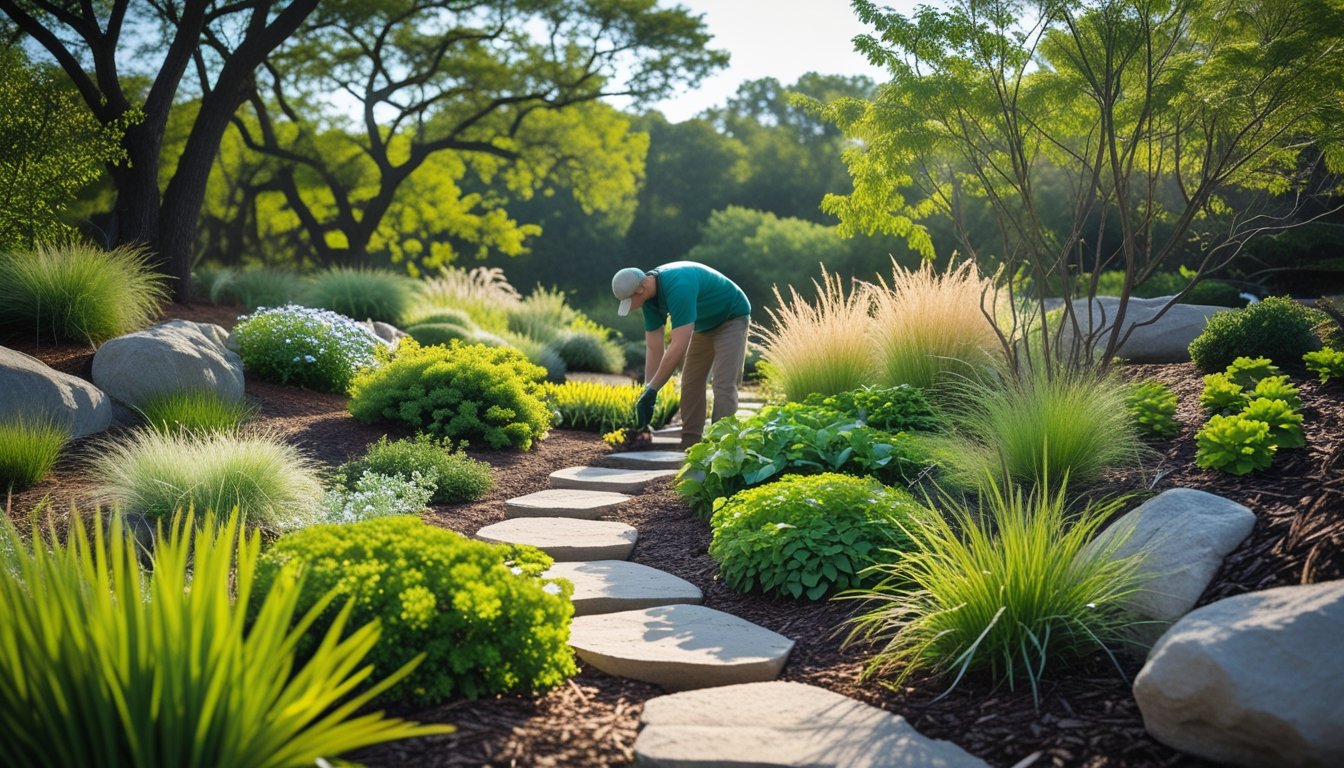Late updated: 02 Jul 2025 10:07
Written by: Emily Thornton
Designing Sustainable Outdoor Spaces With Native Plants: Harnessing Nature's Wisdom
Designing sustainable outdoor spaces with native plants is not just a trend but a fundamental shift towards embracing nature and biodiversity right in our back gardens. Native plants are well-adapted to the local climate and soil conditions, meaning they generally require less water and maintenance than non-native species. By choosing native plant species for your landscape, we can significantly reduce resource consumption and support local wildlife.

Our spaces can become thriving ecosystems, where every plant plays its natural role in supporting local wildlife. Birds, insects, and other creatures depend on these native species for food and shelter. The benefits extend beyond environmental impact; native plants also offer aesthetic appeal, seamlessly blending with regional landscapes and creating a sense of place.
As we embark on this transformative journey, let's explore how we can weave these principles into the fabric of our outdoor spaces. From practical design strategies to the selection of suitable native plants, this article aims to guide you through crafting a truly sustainable garden.
Key Takeaways
- Native plants reduce maintenance and support local ecosystems.
- Focusing on sustainability helps create resilient outdoor spaces.
- Our designs can enhance biodiversity and conserve resources.
Core Principles of Designing Sustainable Outdoor Spaces With Native Plants
Designing sustainable outdoor spaces with native plants is both an eco-friendly and practical choice. Our focus here is on creating outdoor environments that support local ecosystems, conserve resources, and require minimal maintenance while providing habitat for native wildlife.
Understanding the Benefits of Native Plants
Native plants provide significant advantages when it comes to sustainability and biodiversity. Adapted to local climates, they require less water and are typically more resistant to pests and diseases than non-native species. By reducing the need for pesticides and fertilizers, we can create gardens that are both eco-friendly and economically efficient. Moreover, these plants support local wildlife, offering food and shelter to a variety of species. Implementing native flora in our landscapes not only enhances beauty but also contributes positively to the environment.
Sustainable Landscape Design Strategies
Implementing sustainable design strategies starts with assessing the existing conditions of the outdoor space. By choosing native plants, we emphasise water conservation and reduce the need for irrigation. This approach benefits both the environment and the budget. Utilising materials found locally and focusing on natural landscaping techniques can further enhance sustainability. For instance, permeable surfaces allow rainwater to infiltrate the ground, reducing runoff and promoting groundwater recharge. Strategic plant placement, considering factors like sunlight, wind, and soil properties, ensures healthy growth and makes the garden more eco-friendly.
Supporting Local Ecosystems and Biodiversity
Our focus on native plants plays a crucial role in supporting local ecosystems and biodiversity. Planting species that naturally occur in the area helps maintain the delicate balance of existing habitats. Native gardens act as vital habitats for local wildlife, providing food, nesting, and shelter. This promotes biodiversity by attracting various species of birds, insects, and other wildlife. Through thoughtful design and plant selection, we contribute to the restoration of natural ecosystems that have been affected by urbanisation and development. This commitment to biodiversity ensures that we are enriching the environment for future generations.
Implementing Sustainable Solutions in Your Outdoor Space

In shaping eco-friendly areas, we embrace techniques like rainwater harvesting, selecting plants that thrive in dry climates and attract pollinators, improving soil through mulching, and maintaining spaces with strategies that minimise effort and prioritise natural pest control. These solutions contribute to a more resilient and balanced outdoor environment.
Water Conservation and Rainwater Harvesting
Conserving water is vital for sustainable landscapes. Drip irrigation efficiently delivers water directly to plant roots, reducing waste and evaporation. By integrating a rainwater harvesting system, we can capture and store rainwater for later use. This can be as simple as rain barrels or more complex rain garden systems.
Xeriscaping is another technique that minimises water usage. It involves using drought-tolerant plants that naturally require less water. These strategies are essential in regions with limited water resources and contribute significantly to the sustainability of our outdoor spaces.
Selecting Drought-Tolerant and Pollinator-Friendly Plants
Choosing the right plants is crucial for a thriving, low-maintenance outdoor area. Drought-tolerant plants, such as succulents and native grasses, withstand dry conditions and require minimal watering. This selection supports water conservation, especially in arid climates.
We also focus on pollinator-friendly plants, like lavender and coneflowers. These attract bees, butterflies, and other beneficial insects, promoting biodiversity. Flowering plants enhance the ecosystem and ensure that our gardens support local wildlife while thriving with minimal maintenance.
Enhancing Soil Health and Mulching Techniques
Healthy soil forms the foundation of successful landscapes. By improving soil health, we create an environment conducive to plant growth. Composting and using organic fertilisers enrich the soil with essential nutrients.
Applying organic mulch, such as wood chips or straw, regulates soil temperature, reduces evaporation, and suppresses invasive weeds. Moreover, mulch breaks down over time, adding valuable organic matter to the soil. These mulching techniques enhance soil structure, supporting robust and sustainable plant growth.
Low Maintenance and Natural Pest Control Approaches
Minimising maintenance efforts while ensuring a healthy garden involves strategic planning. By selecting low-maintenance plants suited to our climate, we reduce the need for constant upkeep. Natural pest control relies on attracting beneficial insects, such as ladybirds and lacewings, which prey on harmful pests.
Avoiding chemical pesticides is key. Instead, we employ methods like planting pest-repellent species and maintaining a balanced ecosystem to deter unwanted visitors. Emphasis on natural pest control not only safeguards our plants but also protects the environment and encourages biodiversity, securing the long-term health of our outdoor spaces.
Frequently Asked Questions

Incorporating native plants in garden design is a practice that involves using species naturally adapted to the local environment. Creating a sustainable, aesthetically pleasing landscape with these plants requires assessing the local ecosystem, ensuring sustainability, and using specific maintenance strategies.
What are the principles of incorporating native plants into garden design?
Incorporating native plants begins with understanding the local climate, soil, and native flora. It is important to select plants that thrive naturally in these conditions. Grouping plants with similar water and sunlight requirements enhances growth and minimises maintenance.
How can one ensure that a native plant landscape is sustainable?
To maintain sustainability, we should focus on conserving resources. Using mulches to retain soil moisture and employing water-efficient irrigation techniques are beneficial. Additionally, allowing plant diversity to support local wildlife helps sustain the ecosystem.
What is the process for establishing a native plant garden in a front yard?
Establishing a native plant garden involves assessing sunlight patterns, soil quality, and space availability. After analysing these factors, selecting appropriate native species is key. Preparing the area by removing non-native plants and ensuring proper soil drainage will promote healthier growth.
What are effective strategies for maintaining a prairie-style garden using indigenous species?
Prairie-style gardens benefit from techniques like controlled burning or mowing to prevent invasive species. Regular monitoring to address any problems quickly is crucial. Introducing a variety of native grasses and flowering plants ensures year-round visual interest and ecological health.
How can formal gardens incorporate native plantings while maintaining their traditional aesthetic?
For a formal garden, incorporating native plants involves selecting species with structural forms that align with traditional designs. Incorporating native shrubs in hedges or edging can add structure, while native perennials might provide seasonal colour without disrupting the formal layout.
What considerations should be taken into account when choosing native plants for foundation planting?
When selecting foundation plants, consider their size, growth rate, and care requirements. It's vital to choose plants that won't outgrow available space or interfere with structures. Ensuring that plants complement the architectural style of the building enhances the visual coherence of the landscape.
